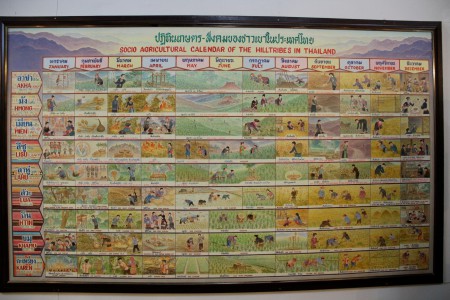- Yale University magazine drinks the fast-track breeding KoolAid panacea.
- Compare and contrast. Repeat. Endlessly.
- Grafting tomatoes is hot for lots of reasons; but how does it protect against leaf-borne diseases? And not just tomatoes, actually.
- Getting the lowdown on that “food sovereignty” farrago.
- And today’s DNA sequencing will solve world hunger and cure bunions story.
- Genomics also good for “health, agriculture, livestock, fisheries and biodiversity” in Philippines. Have we forgotten anything?
- Well yeah, you forgot your handy molecular toolkit.
- Meanwhile, back in the real world, the choice is between forests and yaks.
- More hard choices: evotourism destinations. But check it out, there be agricultural biodiversity too!
- And another one: to go to the International Sandalwood Symposium, or not to go?
Nibbles: Musa taxonomy kerfuffle, Vouchers, Foodies, Aroid roundup, MAS is ok, Sierra Leone conservation
- Banana boffins at each others’ throats over alleged new species. Great spectator sport.
- What does a Musa voucher specimen look like, I wonder.
- Fancy shmanzy Bangkok restaurant links up with heirloom seedbank.
- Aroid network working really hard.
- Marker-assisted selection: a biotechnology we can all get behind. Can’t we?
- Conservation in Sierra Leone. No agrobiodiversity, natch.
Kermit sings the malnutrition blues
When you start really looking out for something, you quickly get to wondering how you could possibly have missed it all before. Case in point: maps of the USA which hint at “a complex association where interactions between a variety of factors could produce reinforcing effects.” That’s in the words of an Annals of Botany Google+ pointer to a recent post of ours here which included maps of obesity and food insecurity and mused vaguely about the coolness of mashups.
After that, of course I started seeing such maps everywhere. Of renewable resources, including biomass. Of landuse. Of poverty. Of, errr, the names of soft drinks.
Some regions jump up at you during the even briefest of looks at the maps of poverty, obesity and food insecurity. Like the Mississippi Valley, for instance. So it is at least somewhat reassuring that other people have noticed that too, and are doing something about it. Even doing multiple things about it, in fact. USDA probably didn’t need fancy maps to identify this particular nexus of deprivation, but maybe there are others that are not so obvious, and which an in-depth perusal of these maps will bring to light. Along with, hopefully, some possible solutions. Even if they are only farmers markets.
But to end on a lighter note, this region is not just known for poverty and malnutrition. The blues came from there, of course, but also, ahem, Kermit the Frog. In fact, there’s a connection between our green friend and agriculture. I am reliably informed that Jim Henson’s father was superintendent of the USDA-ARS research station in Stoneville, MS and worked closely with researchers there. Perhaps Kermit should be asked to spread the nutrition and exercise message around his old hopping grounds? I can’t think of a more suitable role model.
Nibbles: Educashun, Landscapes, Botany, AnGR, Tourism, Ham museum, Native American seeds, Ancient Egyptian grain storage, Ancient beer
- Want to teach about agrobiodiversity? Help is at hand.
- Want to learn about agrobiodiversity? Stay here.
- Want to know what’s going on in biodiversity conservation at Cambridge? Here’s how. Tell us if agriculture gets a look-in. If it doesn’t, come back here. But I bet there’ll be something about landscapes.
- What is a landscape? “The answer … differs tremendously depending on the respondent,” it says here. Wow, those Cambridge boffins will be so shocked.
- Want to know about the plants in that landscape whose definition is so much in the hands of respondents? Most were discovered by just a few botanical superstars. But how many women?
- And if that landscape is Turkish and there are (is?) livestock in it, this is what you’ll see.
- Want to tour the world’s top evolution sites? Here’s the first stop. Now, how about crop evolution (and domestication, natch) sites. Like some livestock- and crop-wild-relative-discovered-by-a-botanical-superstar-filled Turkish landscape, perhaps.
- Or what about sites connected with food production and marketing more generally, for that matter. No, that list would be too long. Interesting, but too long. Would need to prioritize ruthlessly.
- One thing for certain, though, it should include a couple of community genebanks.
- Where it is not inconceivable that seeds would be protected following age-old practices. Which may or may not be taught in fancy courses.
- Oh, and beer.
Agricultural calendar in northern Thailand
Thanks to Amanda for sending us this photo of one of the exhibits at the Opium Museum at Chiang Saen, Thailand, which is in the middle of the Golden Triangle. A nice way of displaying variation in local knowledge about agricultural practices, in this case the cropping calendar. It was not accompanied, alas, by a similar display of differences in crop or variety menus, alas. But one can imagine how that too could be made rather attractive.
